Morningstar has published their 2022 Diversification Landscape (direct link?, but free with email), another useful whitepaper for DIY investors that looks closer at the correlations between different asset classes. The first three sentences quoted below are important:
The problem is that correlation coefficients shift over time, so what worked in the past won’t necessarily work in the future. In addition, adding asset classes to reduce volatility can also drag down returns, sometimes over multiyear periods. Moreover, correlations between many assets spike during periods of market crisis—in other words, exactly when you need diversification the most. The catalysts for crisis periods that lead to equity-market declines can also vary dramatically. Macroeconomic stress can drive declines (as it did during 2008 and early 2020), but so can rising interest rates, geopolitical uncertainty, and so on. Those underlying conditions can have an impact on which diversifiers fare best.
In this paper, we dig into the diversification benefits of adding various assets to a U.S. equity portfolio, including taxable bonds, municipal bonds, international equity, commodities, alternatives, sector-specific indexes, investment styles, factor indexes, and cryptocurrency.
I’m not very interested in correlations over a recent 1-year timeframe, but I am interested in stepping back and seeing how asset classes behave over longer periods of time.
The lower the correlation between asset classes (the less they move in the same direction), the greater the reduction in volatility you get by combining assets. As long as you combine asset classes with correlations below 1, you get some degree of volatility reduction.
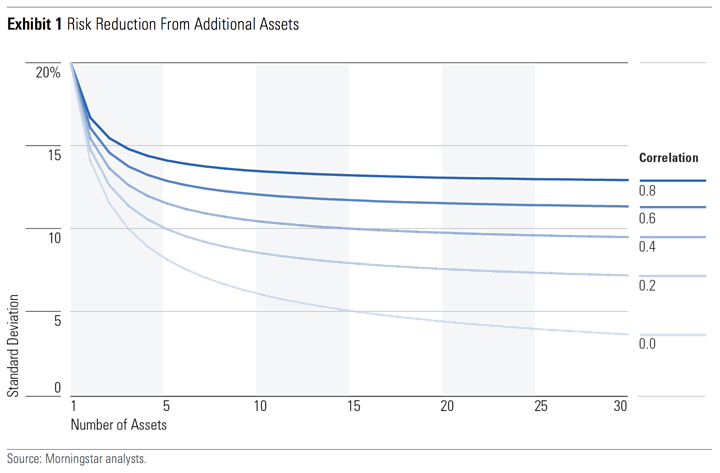
Here are a few selected charts from the research paper, along with my quick takeaway.
Takeaway #1: In terms of diversification benefits, staying as safe as possible is still the way to go. The best is still US Treasury bonds. Even the popular US “total bond” indices which include corporate bonds have shown positive correlations with stocks at times.
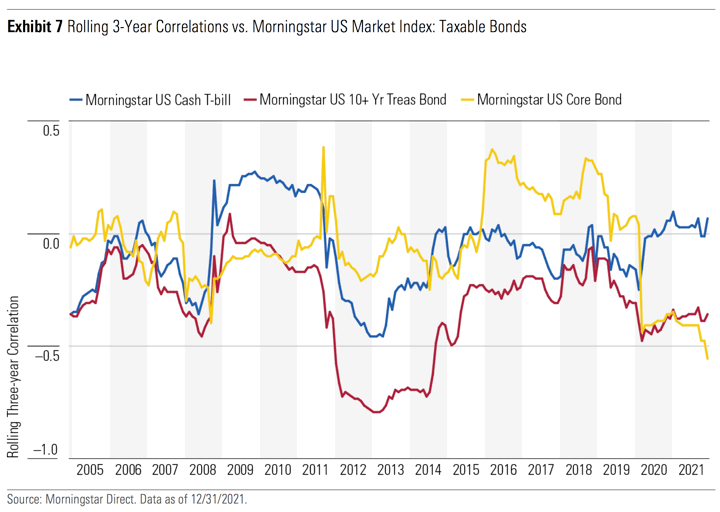
Takeaway #2: High-quality muni bonds have also kept their correlations negative, but high-yield “junk” muni bonds spike at the exact wrong time (market crashes).
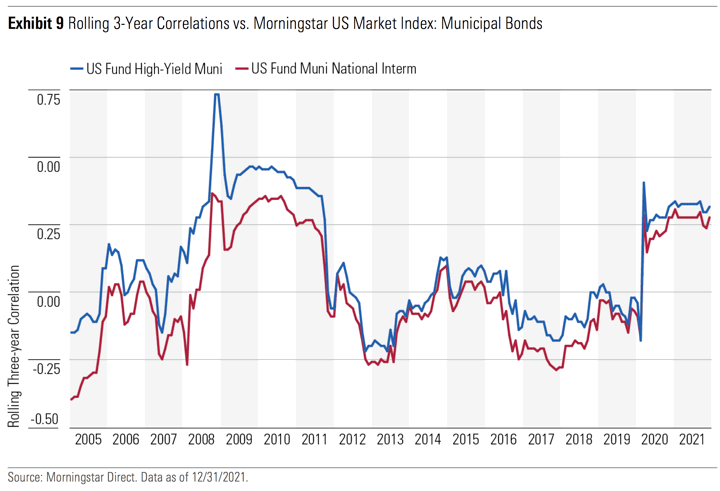
Takeaway #3: International stocks offer a little diversification benefit, but are usually strongly correlated with US stocks. You must have faith that international stock returns will at times exceed US stock returns for periods of time to invest in this asset class.
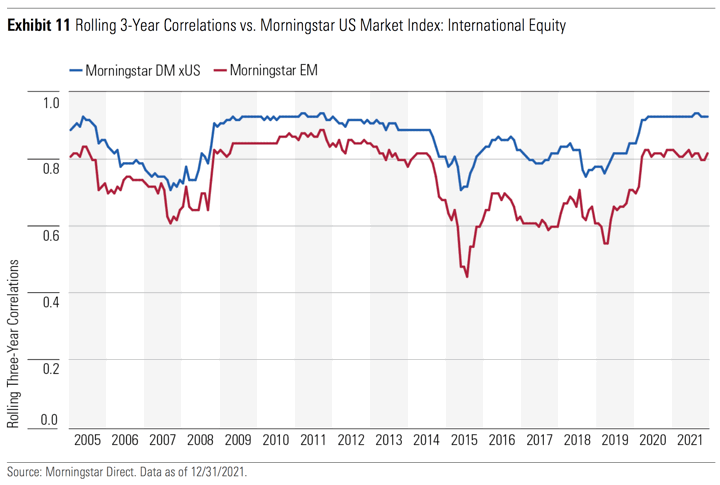
Takeaway #4: Commodities go through boom and bust cycles as part of their nature, and the correlations with US stocks can also stay high or low for years at a time. I find it all very unreliable and unpredictable.
Takeaway #5: Gold has shown a consistently low correlation with US stocks. For myself, it’s not the correlation I’m concerned with, but the long-term returns.
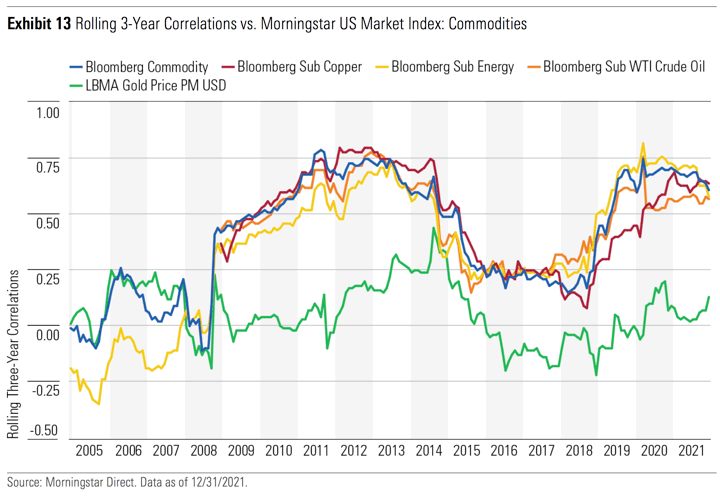
 The Best Credit Card Bonus Offers – October 2024
The Best Credit Card Bonus Offers – October 2024 Big List of Free Stocks from Brokerage Apps
Big List of Free Stocks from Brokerage Apps Best Interest Rates on Cash - October 2024
Best Interest Rates on Cash - October 2024 Free Credit Scores x 3 + Free Credit Monitoring
Free Credit Scores x 3 + Free Credit Monitoring Best No Fee 0% APR Balance Transfer Offers
Best No Fee 0% APR Balance Transfer Offers Little-Known Cellular Data Plans That Can Save Big Money
Little-Known Cellular Data Plans That Can Save Big Money How To Haggle Your Cable or Direct TV Bill
How To Haggle Your Cable or Direct TV Bill Big List of Free Consumer Data Reports (Credit, Rent, Work)
Big List of Free Consumer Data Reports (Credit, Rent, Work)
Thanks for another great post, Jonathan! Regarding your Takeaway #5, I felt the same for many years.
Then last December, after seeing how a small allocation to gold appeared to reduce risk AND increase return on the Portfolio Visualizer tool, I added a small allocation to SGOL. So far, I’m happy with this decision.
FYI – I took the liberty of testing out your portfolio (as listed on the blog) with and without a small allocation to gold. Looks like similar result for you. https://tinyurl.com/2p85jxj8
Very interesting, thanks for the link! I think that if one wanted to include a small allocation to gold for diversification purposes, that would be quite understandable. Just be ready for the ride. 2000 to 2020 was still a pretty good period for gold, historically speaking:
https://www.macrotrends.net/1333/historical-gold-prices-100-year-chart
Good point. Your chart does make me a little nervous, lol.
What are your thoughts on the “Effect of Diversification Over Time: Net Effect on Risk-Adjusted Returns” chart? (The one that shows that the diversified portfolio has underperformed a simple 60-40 for the last 10 years.) Having the US stock market on a bull run for nearly that entire time (especially relative to its peers) probably explains it. I can’t quite decide if this makes me hopeful for the future of the diversification benefit, or if it goes the way of small cap value (which sure seems like an inefficiency that has disappeared).
One other note: I didn’t see a chart in the document showing REITs’ correlation to the US stock market over time. The correlation matrix charts at the end were all I could find. They seem to show REITs being decent diversifiers (similar to emerging markets funds, minus the poor recent performance–which admittedly could be a negative in the future, if they revert to some mean).
Yes, the US stock market run recently pretty much explains it. That’s the main problem with a lot of backtested stuff. Whatever has been hot recently will overwhelm all the numbers. When international/emerging was hot, everyone stuffed it in their portfolios. Now that the US has been hot, everyone “knows” that US will continue to outperform.
I don’t know what will happen, so I hold something close to world market cap weighting. I figure, if the US outperforms for another decade or two, then it’ll just become 70 or even 80% of world market cap, and that’ll be what I hold. I’ll be fine either way.
I still think small value has some room to to run before it goes away, although it may not be as strong as in the past.
I didn’t see a good REIT chart either, which was too bad.